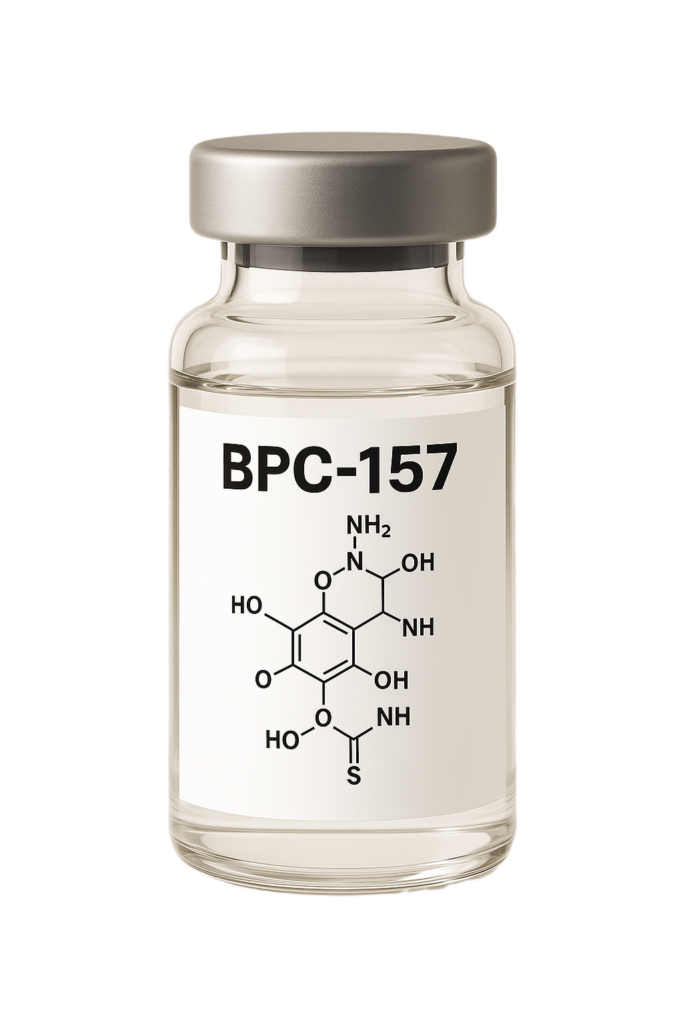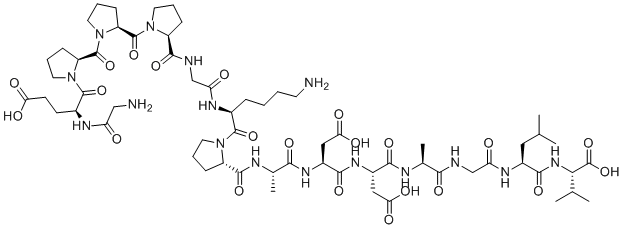BPC-157
Musculoskeletal repair
Neurological recovery
Anti-inflammatory effects
BPC-157 – Body Protection Compound-157
Mechanism of action
BPC-157 is believed to enhance angiogenesis, support collagen production, and modulate growth factors, thereby facilitating tissue regeneration and healing.
Notable Studies
Preclinical studies suggest BPC-157 may aid in healing various tissues, including muscles, tendons, and ligaments. However, comprehensive human clinical trials are lacking.
Risk Associated
While BPC-157 shows promise, it’s not approved for human use by regulatory agencies. Potential risks include unknown long-term effects and lack of standardized dosing.
Dosage
Typical research dosages range from 200 to 500 micrograms per day, administered via injection or orally. Dosage may vary based on specific research objectives.
External link


BPC-157
Musculoskeletal repair
Neurological recovery
Anti-inflammatory effects
Mechanism of action
BPC-157 is believed to enhance angiogenesis, support collagen production, and modulate growth factors, thereby facilitating tissue regeneration and healing.
Risk
Associated
While BPC-157 shows promise, it’s not approved for human use by regulatory agencies. Potential risks include unknown long-term effects and lack of standardized dosing.
Notable Studies
Preclinical studies suggest BPC-157 may aid in healing various tissues, including muscles, tendons, and ligaments. However, comprehensive human clinical trials are lacking.
Dosage
Typical research dosages range from 200 to 500 micrograms per day, administered via injection or orally. Dosage may vary based on specific research objectives.
External link
BPC-157
Musculoskeletal repair
Neurological recovery
Anti-inflammatory effects
Mechanism of action
BPC-157 is believed to enhance angiogenesis, support collagen production, and modulate growth factors, thereby facilitating tissue regeneration and healing.

Risk
Associated
While BPC-157 shows promise, it’s not approved for human use by regulatory agencies. Potential risks include unknown long-term effects and lack of standardized dosing.
Notable Studies
Preclinical studies suggest BPC-157 may aid in healing various tissues, including muscles, tendons, and ligaments. However, comprehensive human clinical trials are lacking.
Dosage
Typical research dosages range from 200 to 500 micrograms per day, administered via injection or orally. Dosage may vary based on specific research objectives.
External link
-
Gwyer D, Wragg NM, Wilson SL. Gastric pentadecapeptide body protection compound BPC 157 and its role in accelerating musculoskeletal soft tissue healing. Cell Tissue Res. 2019;377(2):153-159.
-
Chang CH, Tsai WC, Hsu YH, Pang JH. Pentadecapeptide BPC 157 enhances the growth hormone receptor expression in tendon fibroblasts. Molecules. 2014;19(11):19066-19077.
-
Vukojevic J, Milavić M, Perović D, et al. Pentadecapeptide BPC 157 and the central nervous system. Neural Regen Res. 2022;17(3):482-487.
-
Knezevic M, Gojkovic S, Krezic I, et al. Occlusion of the Superior Mesenteric Artery in Rats Reversed by Collateral Pathways Activation: Gastric Pentadecapeptide BPC 157 Therapy Counteracts Multiple Organ Dysfunction Syndrome; Intracranial, Portal, and Caval Hypertension; and Aortal Hypotension. Biomedicines. 2021;9(6):609.
-
Hsieh MJ, Lee CH, Chueh HY, et al. Modulatory effects of BPC 157 on vasomotor tone and the activation of Src-Caveolin-1-endothelial nitric oxide synthase pathway. Sci Rep. 2020;10(1):17078.